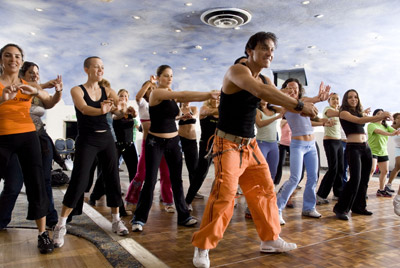Worldwide Survey of Fitness Trends for 2012
For the sixth year in a row, The American College of Sports Medicine, the largest sports medicine and exercise science
organization in the world, published the Worldwide Survey of Fitness Trends reporting global trends for 2012.
The survey was completed by 2,620 health and fitness professionals worldwide and was designed to reveal trends in various fitness environments.
The top ten fitness trends predicted for 2012 are:
1. Educated and experienced fitness professionals. Given the large number of organizations offering health and fitness certifications, it’s important that consumers choose professionals certified through programs that are accredited by the National Commission for Certifying Agencies (NCCA).
2. Strength training. Strength training remains a central emphasis for many health clubs. Incorporating strength training
is an essential part of a complete physical activity program for all physical activity levels and genders.
3. Fitness programs for older adults. As the baby boom generation ages into retirement, some of these people have more discretionary money than their younger counterparts. Therefore, many health and fitness professionals are taking the time to create age-appropriate fitness programs to keep older adults healthy and active.
4. Exercise and weight loss. In addition to nutrition, exercise is a key component of a proper weight loss program. Health and fitness professionals who provide weight loss programs are increasingly incorporating regular exercise and caloric restriction for better weight control in their clients.
5. Children and obesity. With childhood obesity growing at an alarming rate, health and fitness professionals see the epidemic as an opportunity to create programs tailored to overweight and obese children. Solving the problem of childhood obesity will have an impact on the health care industry today and for years to come.
6. Personal training. More and more students are majoring in kinesiology, which indicates that students are preparing themselves for careers in allied health fields such as personal training. Education, training and proper credentialing for personal trainers have become increasingly important to the health and fitness facilities that employ them.
7. Core training. Distinct from strength training, core training specifically emphasizes conditioning of the middle-body muscles, including the pelvis, lower back, hips and abdomen – all of which provide needed support for the spine.
8. Group personal training. In challenging economic times, many personal trainers are offering group training options. Training two or three people at once makes economic sense for both the trainer and the clients.
9. Zumba and other dance workouts. A workout that requires energy and enthusiasm, Zumba combines Latin rhythms with interval-type exercise and resistance training.
10. Functional fitness. This is a trend toward using strength training to improve balance and ease of daily living.
Functional fitness and special fitness programs for older adults are closely related.


